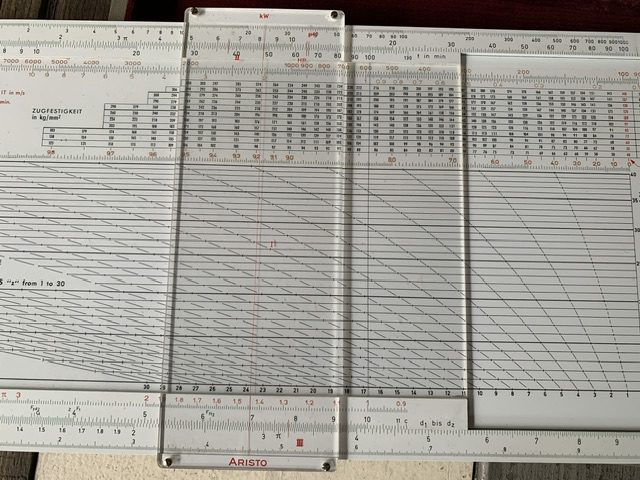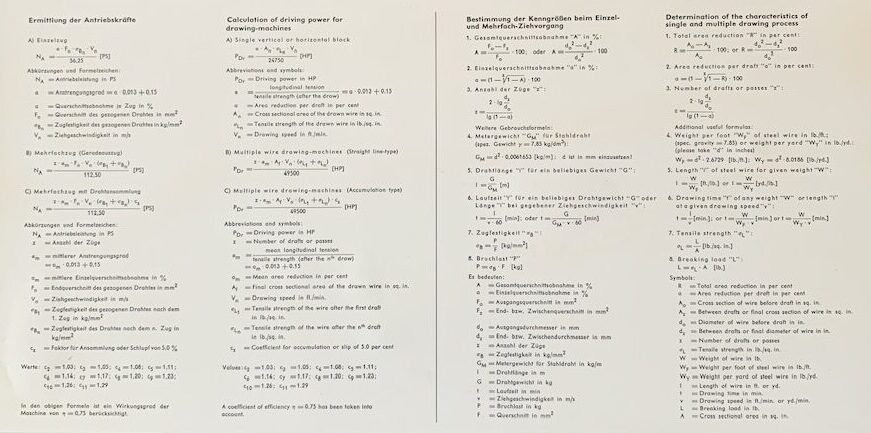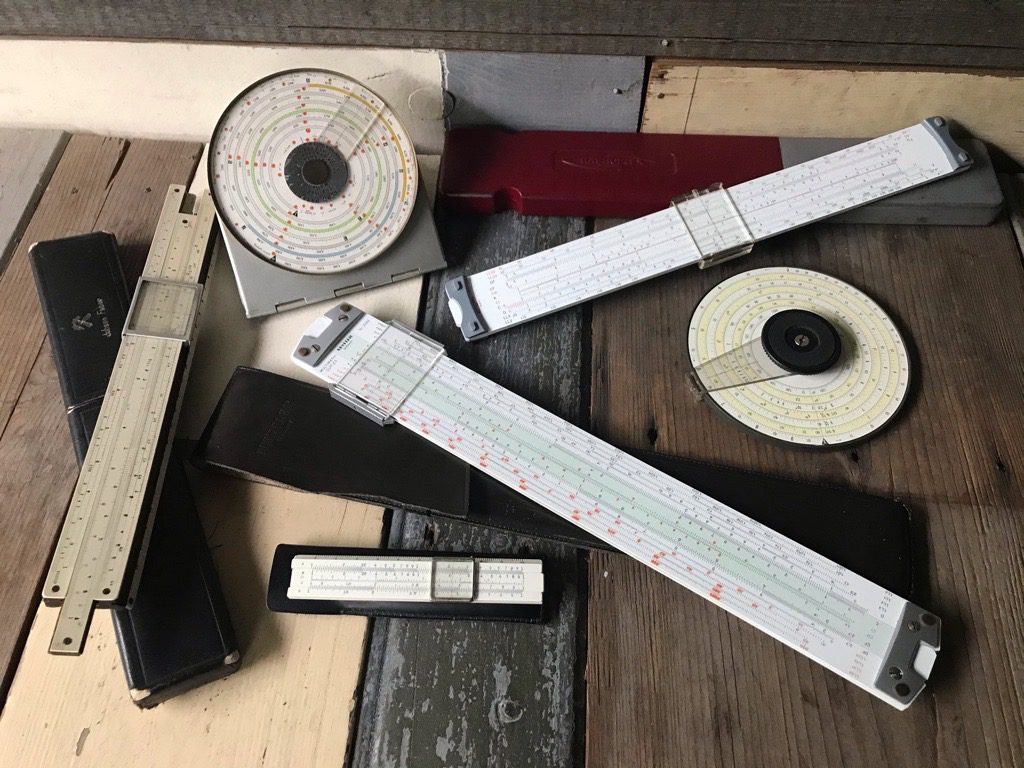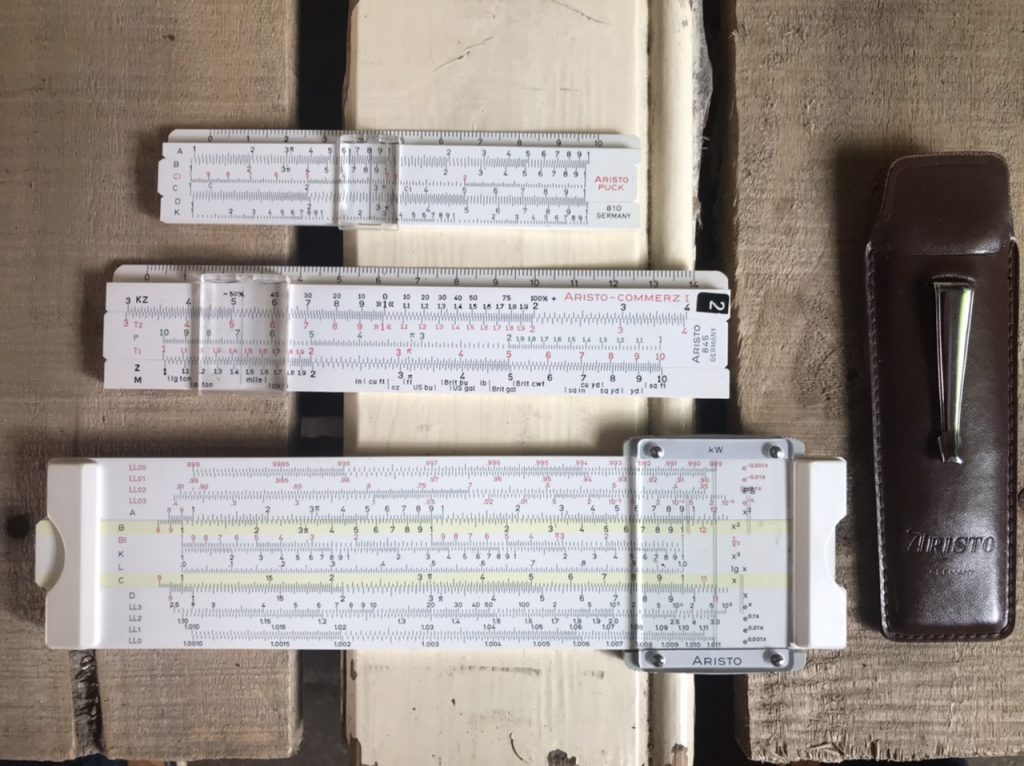There are slide rules and then there are slide RULEs. The latter being very interesting, unusual and rare slide rules that rule the top of the list of interesting or rare or unusual slide rules, because it is has all these characteristics. And on top of that it is also large AND it came in a dedicated case as shown below. I present the Aristo 90103 Wire/Draht slide rule, made in Germany in the 1960’s (or at least build after a patent from 1960).

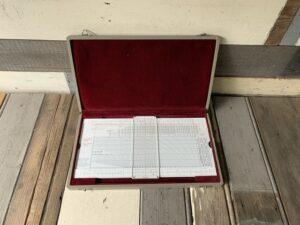
The size of this beautifully engineered item is 16,6 cm or 6 1/2 inch high, which for a slide rule is about double or triple the normal height. From side to side it measures an almost standard 32 cm or ca. 13 inches wide. The original showcase in which it resides, is lined with red velvet and padded in such a way that a snug fit is created with ample room for cursor without it moving freely. The case itself is made of wood and wrapped in leather in the Aristo grey that all slide rules from the 1950-1960 period were covered in. Finished with metal hinges and 2 locking triangles over pins in front. This must have been pretty pricy to produces, so well worth looking into.
Wire drawing process
First of all you might be wondering what the Wire slide rule aka “Draht rechenschieber” in German aka the “FIL règle a calcule” in French or “Alambra Regla de calculo” in Spanish is being used for. And why is it Universal?
The Encyclopedia Britannica brings light to this question and is the perfect source to answer this. Since the Encyclopedia Britannica has been around for 256 years (since 2012 the 32-volume printed edition can only be found online) I would invite you to read the full article here in the technology section. But for easy reading I will give a short summary.

The wire-drawing process as shown above, consists of pointing the rod (mandrel shaped) through the tube, thus threading the pointed end through the die, and attaching the end to a drawing carriage. The drive sprocket is revolved by a motor and pulls the lubricated rod through the die, reducing it in diameter and increasing its length. For smaller sizes of wire, the reduction can only be achieved by multiple draws. This process has not changed since biblical times, just the way the drawing power was achieved from hand drawing through steam powered and now electrical drawing, evolved over time.
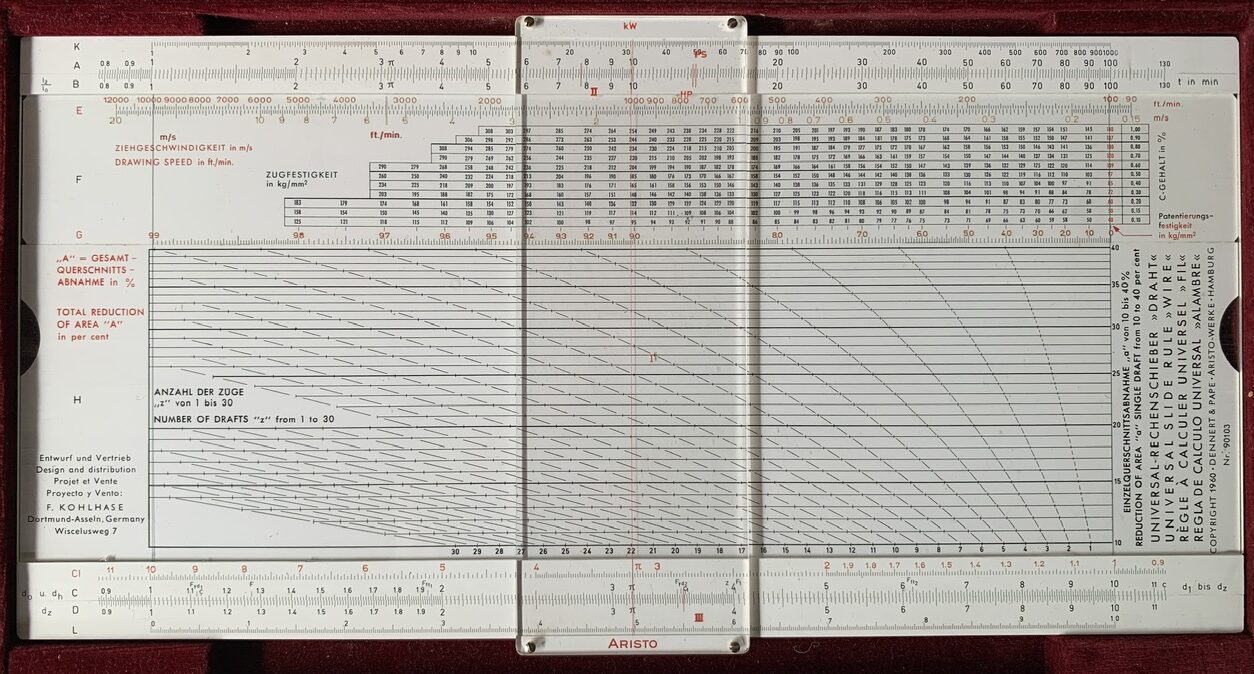
Mr. Kohlhase made all the calculations around strength needed and outcome predicted to help standardize the process for all thickness, the number of drawing needed, power that needs to applied and which materials and so on. His calculations are shown on the back of the slide rule (below).
These calculations and the way they were represented and made useable on a slide rule were copyrighted in 1960.
Dedicated Aristo Wire / Draht slide rules
For as far as my research went I can find 4 different types of wire slide rules by Aristo that apply the calculations of mr. Kohlhase. The 90103 being the most elaborate one and having multiple languages. It seems that that it is the International (Universal) version of the earlier Aristo Draht 10081/10081A (as shown below). You can see it in all detail shown here on the website of mr. Lovett.

It is also earlier with a 1953 copyright Although I owned the A version with a 1957 copyright. Both slide rules are mentioned in the German digital museum with references to the work of Mr. Kohlhase (and not mention of mr. Heuel). Mr. Kohlhase wrote many books on calculating and testing for the wire industry in the 1950’s and 1960’s. Here is a book cover of his work from 1968. What caught my eye is the logo (I get back to that).
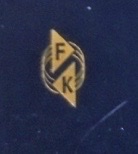
There is also a smaller version called the Aristo 80122, according to the references in the instruction booklet as shown below, it was copywriter in 1953 also. Though I found a version stated to be from 1965 here. It measures ca 17 cm or ca. 7 inches wide, so it seems to be the pocket version of the 10081.
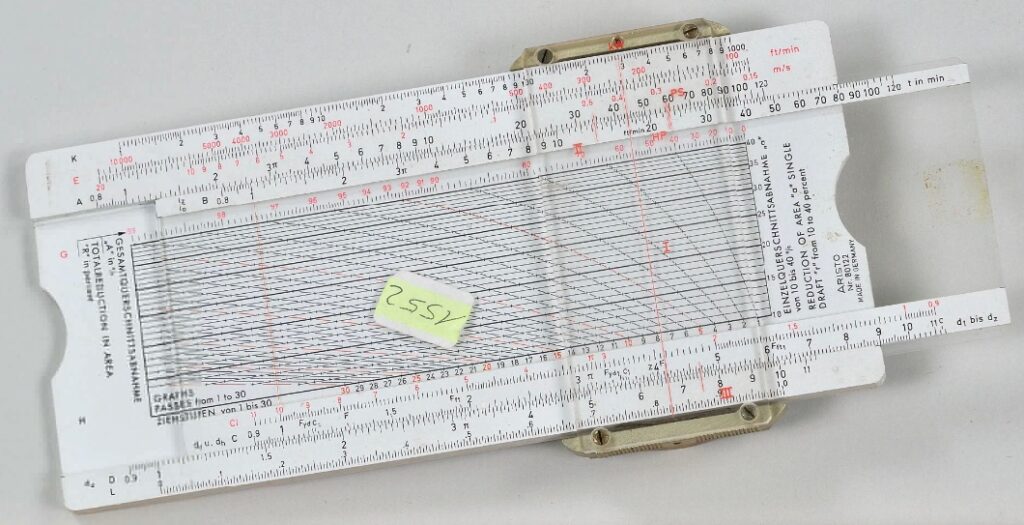
The there is a later pocket version, that again looks very much te same and is called the model Aristo 40128 and it looks like this (pictures kindly shared by a fellow collector). Measuring about 16,5 cm or 6 1/2 inches wide.
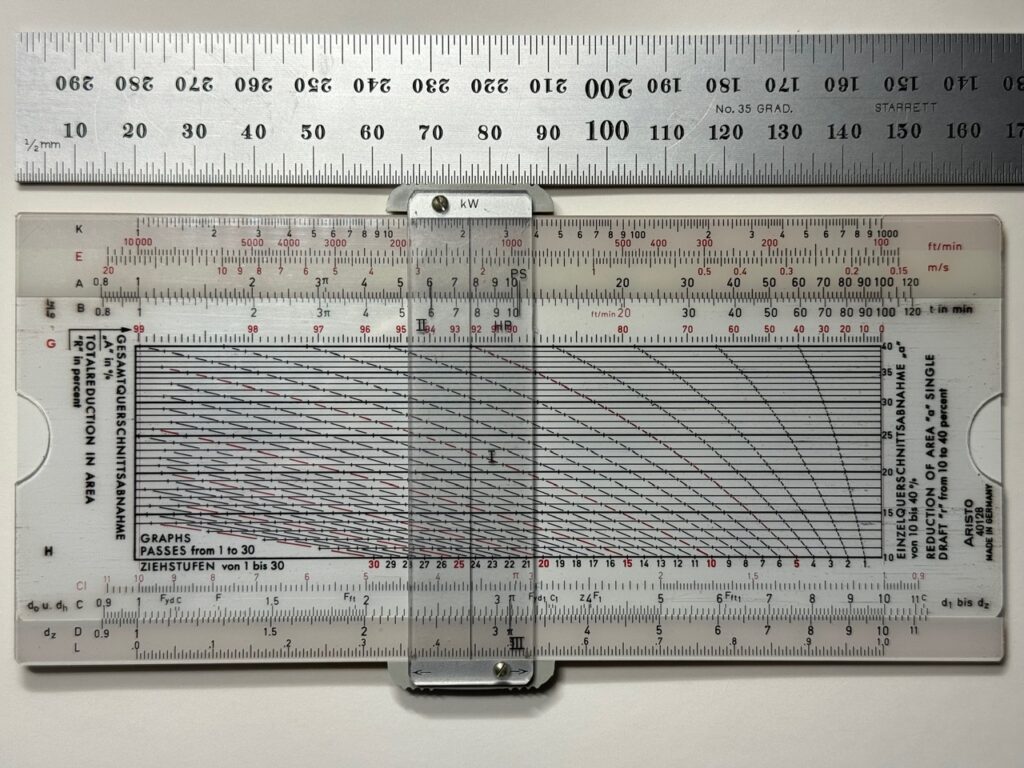
When looking on the back it does have tables but not as elaborate as the larger models. What does catches my eye is the same logo as from Mr. Kohlhase only his initial changed to those of Hermann Heuel (copyright 1965) and he seems to own a company.

There is no reference any more to mr. Kohlhase. It does have the text in various languages so let’s say this is the pocket version to the 90103. What it also has is an instruction booklet as shown below. The full text can be found in the library of the Slide Rule Museum.

In this instruction you find the calculation by Mr. Kohlhase that can also be found on the large models back. You also find that Mr. Heuel (hopefully in good relations to Mr. Kohlhase) claims the system Kohlhase is now the system Kohlhase-Heuel. There also is a new IWA-made slide rule which also carries the Heuel logo and is made and I quote “cheaper” for, and I quote “friends”.
How does this slide rule slide?
The thing that is most obviously different between the 10081 (left) and 90103 is the absence of the extra slider on which the E,F and G scales are displayed as shown below.


All the wire/draht slide rules have the construction where the part in the middle is see-through with a B-scale on top that can be set to the A scale and on the bottom a C-scale that can be set to the D scale. All 3 earlier Aristo slider rules have the see through part sliding. The later 40128 cheaper pocket model slides somewhat unexpected like this (the scales B and C are on an extra see-through layer):

Only in the 90103 is this room use for an extra layer of calculations and schematics (H part is fixed), namely the E,F,G scales can also slide out and to reveal extra information in various languages, but it can also be reversed for a different language. See below.
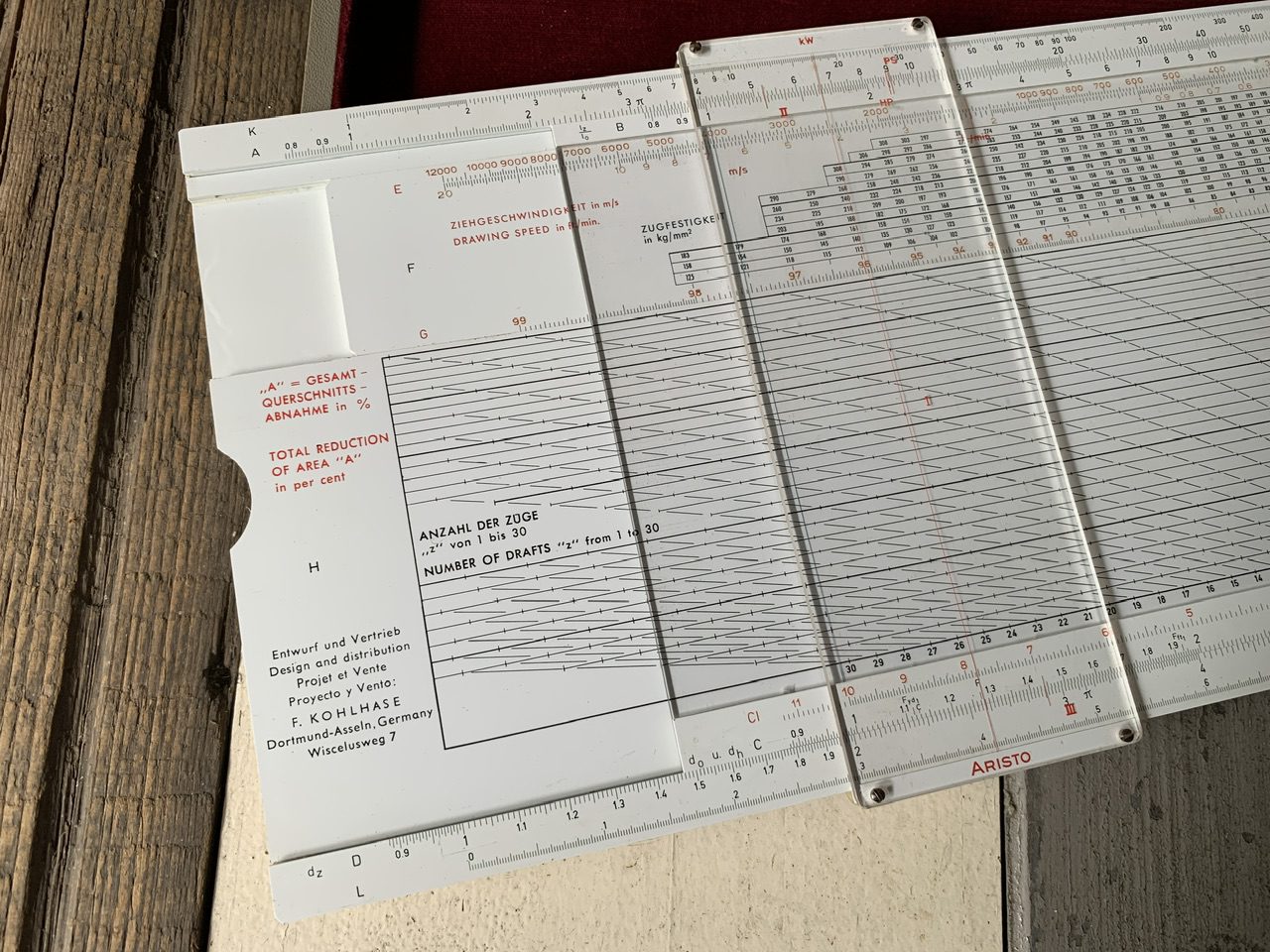

So there are not many differences found in different copyrighted slide rules with different numbers and sizes, it is obvious that the Aristo 90103 rules them all (despite the claims of Mr. Heuer). The 90103 also seem to be very universal in the coverage of languages because Italian is also added in the mix. But the wire industry is and was not the biggest industry out there and these slide rules can be found only seldom so I hope you enjoy this bit of information.


